On April 11, 1945, the U.S. took over the Buchenwald concentration camp. But it was communist prisoners who organised and liberated the Nazi camp. Today, such heroic victories of anti-fascist resistance are under attack.
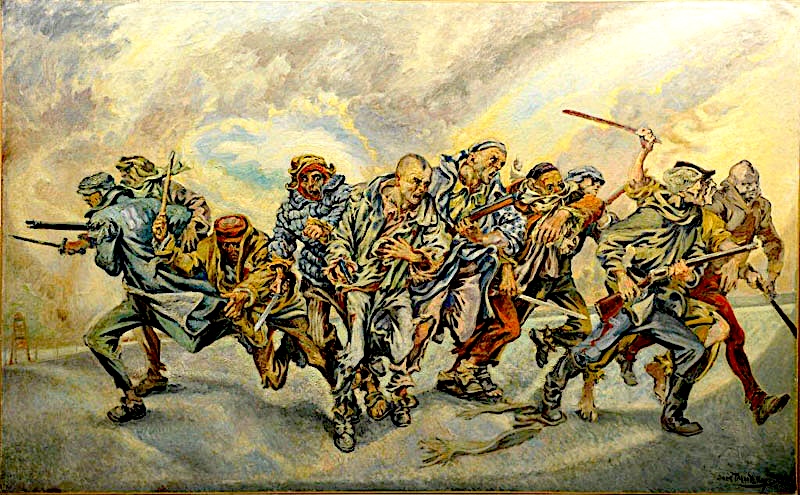
1964 painting by Boris Taslitzky, France, Insurrection à Buchenwald 11 avril 1945 or Insurrection at Buchenwald 11 April 1945. (Via Tricontinental: Institute for Social Research)
By Vijay Prashad
Tricontinental: Institute for Social Research
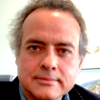 Eighty years ago, on April 11, 1945, units of General George S. Patton’s 4th Armoured Division of the U.S. armed forces drove toward the city of Weimar, Germany, where the Buchenwald concentration camp was located.
Eighty years ago, on April 11, 1945, units of General George S. Patton’s 4th Armoured Division of the U.S. armed forces drove toward the city of Weimar, Germany, where the Buchenwald concentration camp was located.
Patton’s troops eventually took control of the camp, but soldiers’ statements, which were collected later by historians, suggest that the U.S. tanks were not what liberated Buchenwald: the camp had already been seized by the organisation and courage of the prisoners who took advantage of the flight of German soldiers in the face of the Allied advance.
Political prisoners in the Buchenwald concentration camp had formed themselves into combat groups (Kampfgruppen), which used their hidden cache of arms to foment an uprising within the camp, disarm the Nazi guards and seize the tower at the camp’s entrance.
The prisoners flew a white flag from the tower and formed a ring around the camp to inform the U.S. troops that they had already liberated the Buchenwald concentration camp. “Das Lager hatte sich selbst befreit,” they said: “the camp liberated itself.”
It was not only at Buchenwald that the prisoners rebelled. In August 1943, Treblinka prisoners rose up in an armed rebellion and, despite being gunned down, forced the Nazis to shut down this repulsive extermination camp (the Nazis murdered almost a million Jews in this camp alone).
The Soviet Union’s Red Army and U.S. forces also liberated several camps, most of them terrible death camps of the Holocaust. U.S. troops liberated Dachau in April 1945, but it was the Red Army that opened the doors to most of the worst camps, such as Majdanek (July 1944), Auschwitz (January 1945) in Poland and Sachsenhausen (April 1945) and Ravensbrück (April 1945) in Germany.
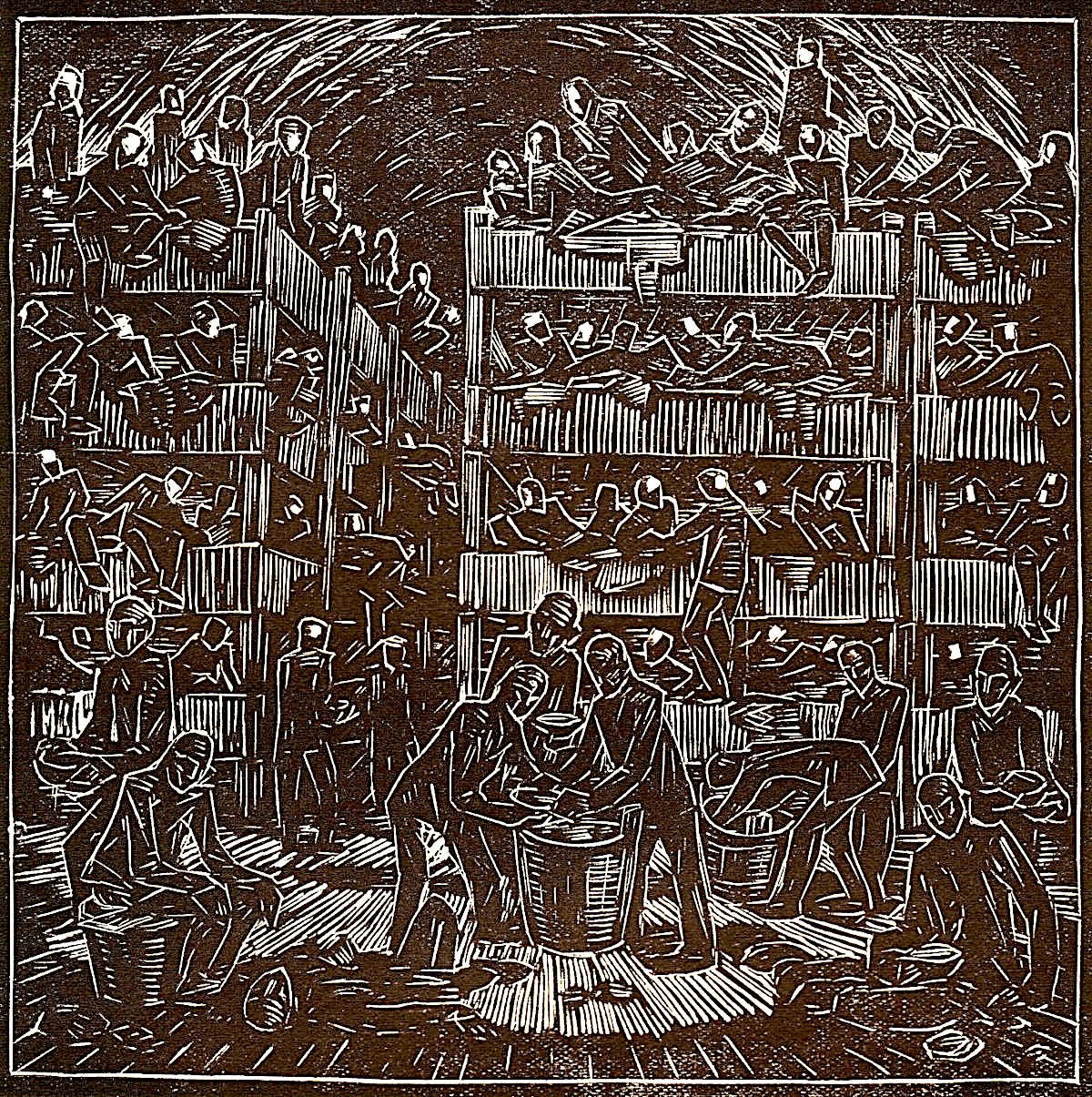
Dominik Cerný, Czechoslovakia, K.L. Dora: Bydlení ve štole or K. L. Dora: Living in the Tunnel, 1953. (Via Tricontinental: Institute for Social Research)
In July 1937, the Nazi regime brought prisoners from Sachsenhausen to an area near Weimar (home to Johann Wolfgang von Goethe and Friedrich Schiller as well as the site where the 1919 German Constitution was signed). The prisoners cleared nearly 400 acres of forest to build a concentration camp to hold 8,000 people, who Nazi camp commander Hermann Pister (1942–1945) used for medical experimentation and forced labour.
By the camp’s closure eight years later, it held almost 280,000 prisoners (mostly Communists, Social Democrats, Roma and Sinti, Jews and Christian dissidents). In late 1943, the Nazis shot to death nearly 8,500 Soviet prisoners of war in the camp and killed many Communists and Social Democrats.
The Nazis killed an estimated total of 56,000 prisoners in this camp, including Communist Party of Germany (KPD) leader Ernst Thälmann, who was shot to death on Aug. 18, 1944, after 11 years in solitary confinement. But Buchenwald was not an extermination camp like Majdanek and Auschwitz. It was not directly part of Adolf Hitler’s hideous “final solution to the Jewish question” (Endlösung der Judenfrage).
Within Buchenwald, the Communists and Social Democrats set up the International Camp Committee to organise their lives in the camp and to conduct acts of sabotage and rebellion (including, remarkably, against the nearby armament factories). Eventually, the organisation matured into the Popular Front Committee, set up in 1944, with four leaders: Hermann Brill (German People’s Front), Werner Hilpert (Christian Democrats), Ernst Thape (Social Democrats) and Walter Wolf (Communist Party of Germany).
What was remarkable about this initiative was that despite being prisoners, the committee had already begun to discuss the possible future of a new Germany that had been de-Nazified from top to bottom and would be based on a cooperative economy. While in Buchenwald, Wolf wrote A Critique of Unreason: On the Analysis of National Socialist Pseudo-Philosophy.
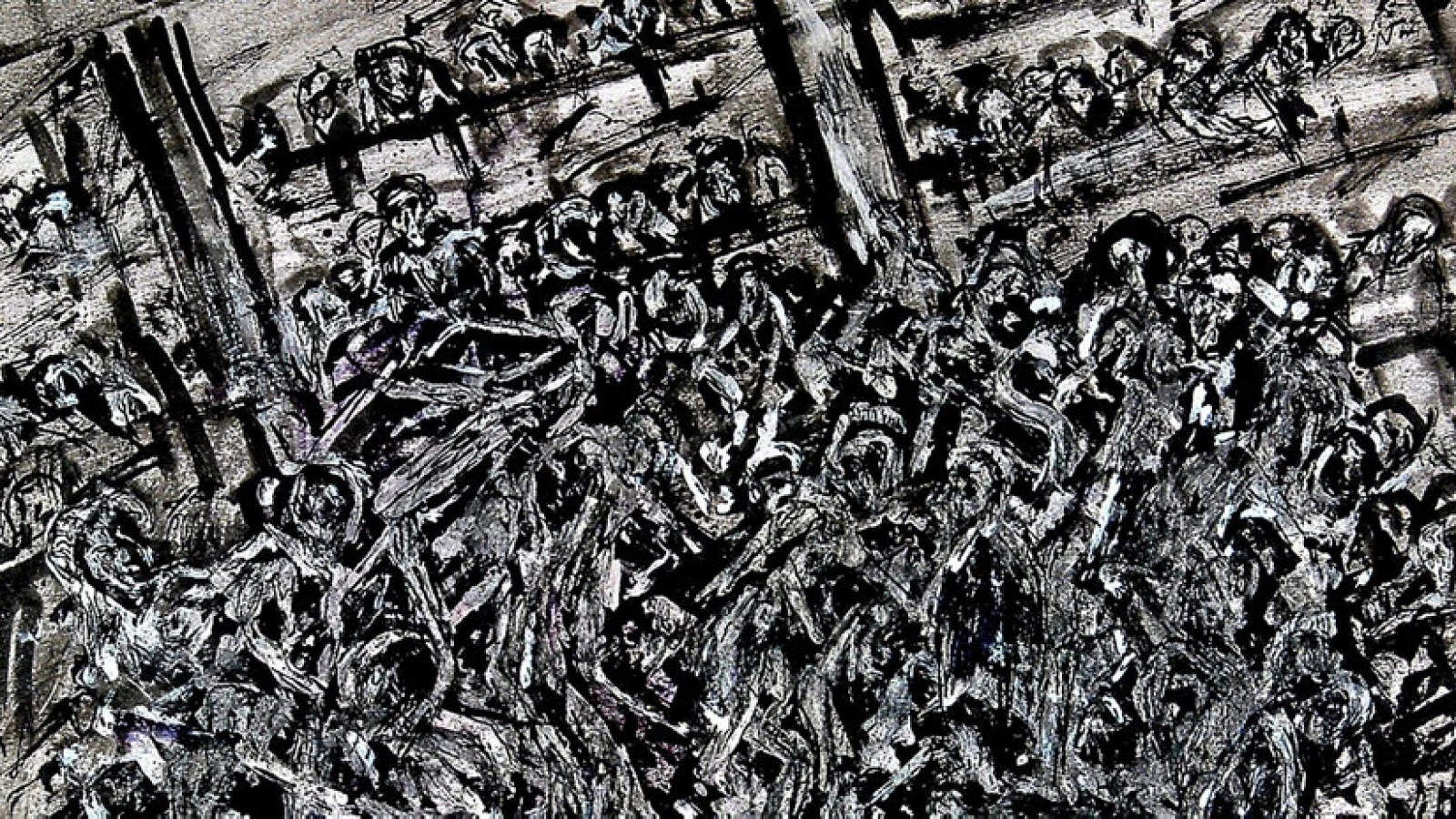
Nachum Bandel, Ukraine, Block 51. Buchenwald. Small Camp, 1947. (Via Tricontinental: Institute for Social Research)
A week after the prisoners liberated Buchenwald, they placed a wooden sculpture near the camp as a symbol of their anti-fascist resistance. They wanted to remember the camp not for the killings, but for their resilience during their incarceration and in their self-liberation.
In 1945, the prisoners had already shaped the Buchenwald Oath, which became their credo: “We will only give up the fight when the last guilty has been judged by the tribunal of all nations. The absolute destruction of Nazism, down to its roots, is our device. The building of a new world of peace and freedom is our ideal.”
The camp, then in the German Democratic Republic (DDR or East Germany), was converted into a prison for Nazis who awaited their trials. Some Nazis were shot for their crimes, including Weimar’s mayor, Karl Otto Koch, who had organised the arrest of Jews in the city in 1941.
Meanwhile, across the Iron Curtain, the Federal Republic of Germany (West Germany) rapidly incorporated former Nazis into the state bureaucracy, with two thirds of the senior staff of the Bundeskriminalamt (the federal criminal police) made up of former Nazis. [Reinhard Gehlen, the former head of Nazi military intelligence, for instance, became chief of the Bundesnachrichtendienst (BND), the West German foreign intelligence agency from 1956 to 1968.]
As the process of trials and punishment for the Nazis came to an end, the remnants of Buchenwald became part of the project of public memorialisation in the DDR.
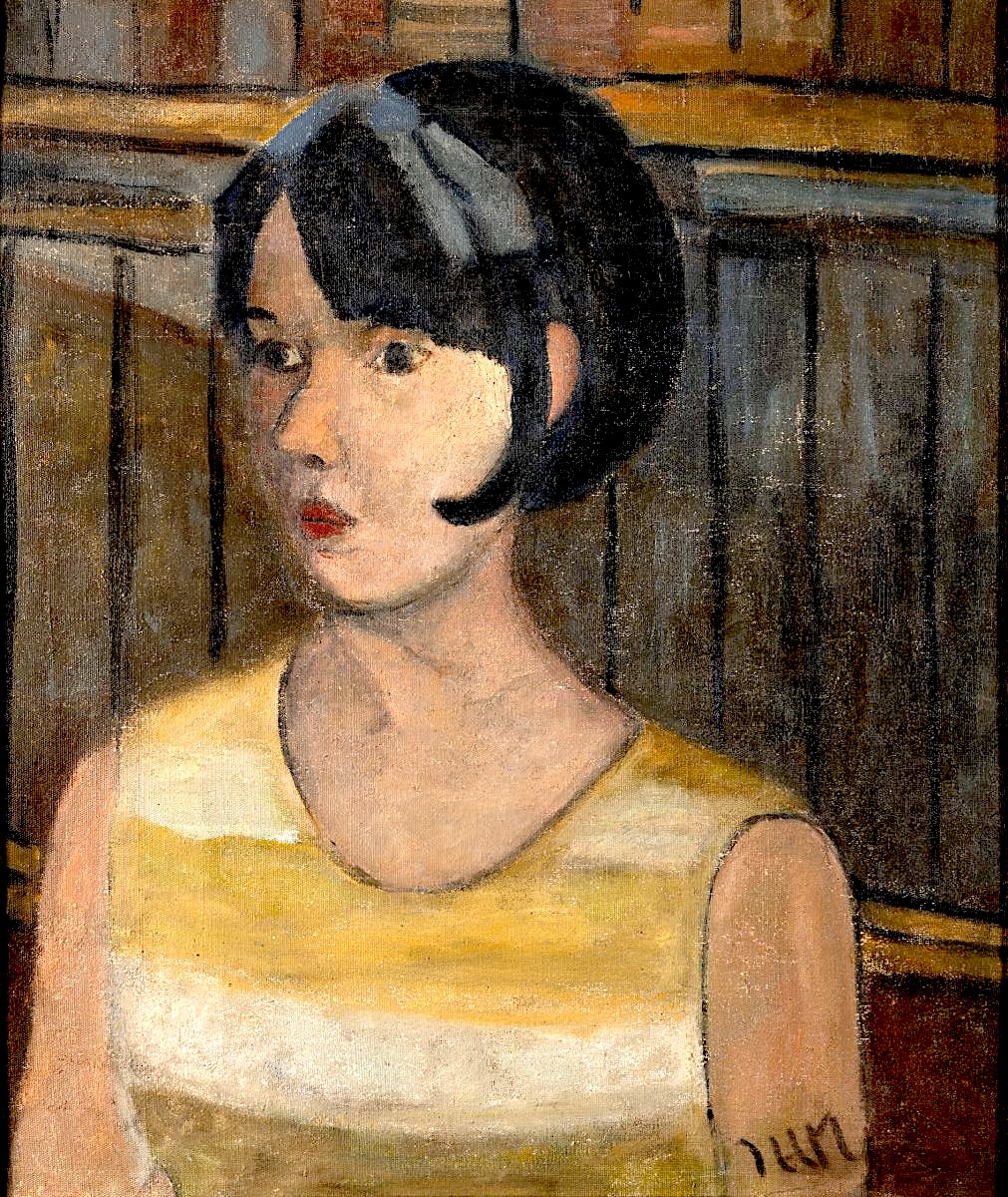
Ilse Häfner-Mode, Germany, Portrait of a Woman in Front of a Wooden Door, n.d. (Via Tricontinental: Institute for Social Research)
In 1958, Otto Grotewohl, a social democrat who was the first prime minister of the DDR, opened the camp to hundreds of thousands of workers and school children to visit the buildings, listen to the stories of both the atrocities and the resistance, and commit themselves to anti-fascism.
That same year, former prisoner Bruno Apitz published Nackt unter Wölfen (Naked Among Wolves), which told the story of how the resistance movement in the camp hid a little boy at great risk to the movement itself, and then how the movement captured the camp in 1945.
The novel was made into a film in the DDR by Frank Beyer in 1963. The story was based on the actual account of Stefan Jerzy Zweig, a boy who was hidden by the prisoners in order to spare him from being sent to Auschwitz. Zweig survived the ordeal and died at the age of 81 in Vienna in 2024.
The DDR shaped its national culture around the theme of anti-fascism. In 1949, the Ministry of People’s Education urged schools to build a calendar of events that highlighted the anti-fascist struggle rather than religious holidays, such as World Peace Day instead of Fasching (Mardi Gras).
The old Jugendweihe (youth initiation ceremony) was reshaped from being merely a rite of passage to an affirmation for young people to commit themselves to anti-fascism. Schools would take their students on field trips to visit Buchenwald, Ravensbrück and Sachsenhausen to learn about the hideousness of fascism and to cultivate humanist and socialist values.
This was a powerful exercise in social transformation for a culture that had been swept into Nazism.
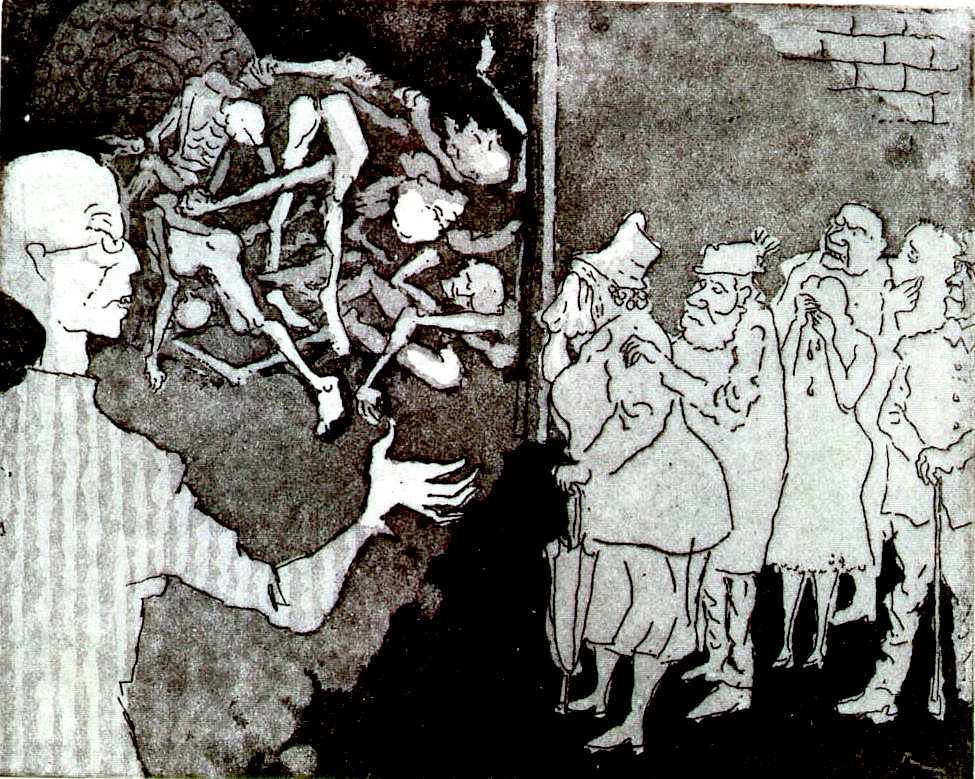
Herbert Sandberg, Germany, We Didn’t Know, 1964. (Via Tricontinental: Institute for Social Research)
When West Germany annexed the east in 1990, a process began to undermine the advances of anti-fascism developed in the DDR. Buchenwald was ground-zero for this exercise.
First, leadership at Buchenwald became a controversy. Dr. Irmgard Seidel, who took over from former KPD prisoner Klaus Trostorff in 1988, found out that she had been sacked through a newspaper article. (By investigating SS records, Dr. Seidel had discovered that there were 28,000 female prisoners at Buchenwald who worked as slave labourers, largely in the armaments factories).
She was replaced by Ulrich Schneider, who was then removed when it was revealed that he had been a member of the Communist Party in West Germany. Schneider was followed by Thomas Hofmann, who was sufficiently anti-communist to please the new political leaders.
Second, the anti-fascist orientation of public memory had to be altered to encourage anti-communism, such as by downplaying the memorial to Thälmann. A new emphasis was placed on the Soviets’ use of Buchenwald to imprison the Nazis.
Historians from Germany’s west began to write accounts saying that it was Patton’s soldiers, not the prisoners, who liberated the camp (this was the interpretation, for instance, of Manfred Overesch’s influential Buchenwald und die DDR. Oder die Suche nach Selbstlegitimation (Buchenwald and the DDR. Or, the Search for Self-Legitimisation), 1995.
In June 1991, German Chancellor Helmut Kohl presided over a ceremony to install six large crosses for the victims of “the communist terror dictatorship” and spoke of the Nazi crimes as if they were identical to the actions of the Soviet Union.
Between 1991 and 1992, the German historian Eberhard Jäckel led a commission to rewrite the history of Buchenwald, including accusing the communist prisoners of collaborating with the Nazis and commemorating the “victims” of the anti-fascist prison. This was an official reordering of historical facts to elevate fascists and undermine the antifascists.
Such historical revisionism has reached new heights in recent years. Diplomatic representatives from Russia and Belarus — two former Soviet Republics — have been uninvited from the annual commemoration events.
In speeches held at the memorial, speakers have equated Nazi concentration camps with Soviet work camps. And while Israeli flags have been openly displayed in Buchenwald, visitors wearing the keffiyeh have been banned from the premises and any mention of the genocide in Palestine has been reprimanded.
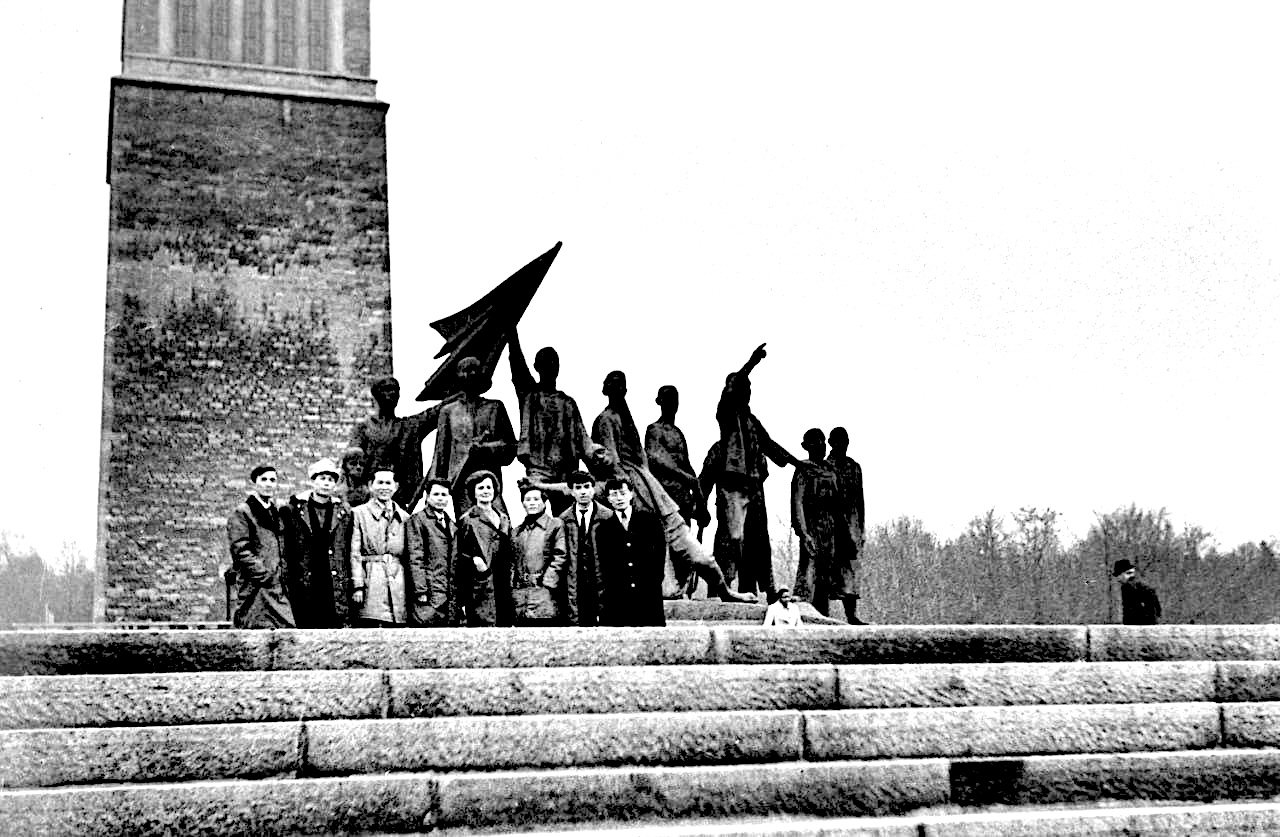
Hilde Kolbe takes her class of Vietnamese students from the Dorothea Christiane Erxleben Medical School in Quedlinburg, DDR, to Buchenwald, April 15, 1976. (Via Tricontinental: Institute for Social Research)
In the 1950s, communist artists joined together to build a set of memorials at Buchenwald commemorating the fight against fascism. Sculptors René Graetz, Waldemar Grzimek and Hans Kies created relief steles with a poem by the DDR’s first culture minister Johannes R. Becher etched on the back:
Thälmann saw what happened one day:
They dug up the weapons that had been hidden away
From the grave the doomed men rose
See their arms stretched out wide
See a memorial in many a guise
Evoking our struggles present and past
The dead admonish: Remember Buchenwald!
— Paintings in this article are by former Buchenwald prisoners and the photograph depicts “Revolt of the Prisoners,” a large bronze sculpture of the prisoners liberating themselves made by Fritz Cremer, who joined the KPD in 1929.
Vijay Prashad is an Indian historian, editor and journalist. He is a writing fellow and chief correspondent at Globetrotter. He is an editor of LeftWord Books and the director of Tricontinental: Institute for Social Research. He is a senior non-resident fellow at Chongyang Institute for Financial Studies, Renmin University of China. He has written more than 20 books, including The Darker Nations and The Poorer Nations. His latest books are Struggle Makes Us Human: Learning From Movements for Socialism and, with Noam Chomsky, The Withdrawal: Iraq, Libya, Afghanistan and the Fragility of U.S. Power.
This article is from Tricontinental: Institute for Social Research.
Views expressed in this article may or may not reflect those of Consortium News.

For further information about Jewish resistance in the camps and elsewhere, including in Treblinka as mentioned in this article, Lucien Steinberg’s book Not as a Lamb (English edition, originally published in French as La Revolte des Justes, 1970) makes an illuminating read. If only more of these efforts at resistance had been successful! Even so, it is important to know that Jews did not all lie down ‘as a lamb’ to the slaughter.
Fascinating, illuminating, and inspiring. Thank you, Mr. Prishad. Until this I had no idea. I had been indoctrinated to believe that Buchenwald was only a death camp for Jews. Thank you, thank you.
Thank you for informing me of this heroic incident and equally important, its suppression in the west. I might add the story of La Nueve (the Ninth Regiment) a unit in the Free French Army consisting of about 148 Spaniards who defied orders and entered Paris forcing the western Allies to liberate the city instead of skirting it in its (lost) race to get to Berlin first. Also along these lines is the biography of Adolph Huesinger, who went from the top of the Wehmacht to the top of the Bundeswehr and NATO. Googling these two matters will evince the weaponization of history. Heusinger of the Fourth Reich(1963) by Charles Allen Jr. is an important work.
Excellent, as always, Mr. Prashad. Thank you for keeping us mindful of the facts of history. I keep your articles so that my family can know these truths you reasearch so thoroughly. Since our education system is being dismantled, our only hope is in writers like you.
what they accuse the USSR of doing – in 1984 for example by that imposter Orwell – altering the past essentially, they have done. May I say that history has been weaponized by the west, just like science, economics and every other field of study – all heavily funded by billionaire oligarch foundations. When the empire falls, what happens to the history of the 20th century? It will look mighty different indeed. The revolutionaries that have been demonized by the west will emerge as the heroic figures on the right side of history that they always have been outside of the west with its liberal academics who see their success in the marketplace of ideas as evidence of their intellectual prowess instead of the more obvious explanation – a willingness to provide justifications for imperialism.
“The DDR shaped its national culture around the theme of anti-fascism”(?) Have you never heard of the Stasi? Not to mention that the 7,000 people executed by the Soviets at NKVD special camp Nr. 2 had no trials whatsoever. Maybe stop the Soviet apology.
everything that you know, that anyone knows about Soviet history is colored by, and written by an empire hell bent on destroying socialism. It is impossible for anyone, even Russians, to study Russian/Soviet history and become serious academics without being utterly anti-Stalinist and anti-Soviet. This will change John, once the empire falls. Outside of the Western world, this anti-Soviet, anti-Communist, anti-Marxist, anti-Stalin/Lenin ideas are simply not as prevalent. This is because for decades, while the Western colonial and then imperial powers were supporting every dictator, death squad, apartheid, genocide, the Soviet Union and the DDR were providing support and free education to the colonized peoples of the world. You don’t have to agree of course. Soon it will not matter. My recommendation to you is to question the official narrative around history just as much as you question the official narrative about current events that have led you to a site such as this one.
Well Said and Thank You!
I would love learning the psychological profiles of the “fascist” – probably, the authoritarian personality or psychopathic/sociopathic? For the history – the true history presented here of prisoners releasing themselves – apparently was consciously (intentionally) buried by the fascists (refashioned into the bureaucracy) by scapegoating the heroic communist liberators and attributing liberation to the Americans. Cunning like Netenyahu who relentlessly lies and never is contradicted publicly. Once a fascist always a fascist? Curious. Is there any research into the psychological profiles of billionaires and corporate CEO’s? Climate deniers?
According to the late Swiss writer and psychotherapist Alice Miller an authoritarian or fascist personality is one result of the acting out of unresolved childhood trauma, which almost everyone has suffered, some to a much greater degree than others. She has written a number of books and has some interesting articles, which are all devoted to unresolved childhood trauma and its many consequences.
One of her books is titled For Your Own Good, with subtitle Hidden Cruelty in Childrearing and the Roots of Violence. Her book includes a section about horrific childrearing practices in previous centuries, and a section about those who participated in the Third Reich in Germany, from high officials to those who ran the concentration camps to ordinary Germans who went along with the Reich. She found that such people all had a “strict” (euphemism for soul-murdering) upbringing. And she has an entire chapter about Hitler, and how he was constantly and brutally beaten by his father and did not receive any love, in any real sense of the word, from his mother, and how he later reenacted his upbringing on the world stage.
Her entire book is online at:
hxxps://www.nospank.net/fyog.htm (Scroll down for contents.)
And here are links to a couple of web sites containing articles by Alice Miller:
hxxps://www.naturalchild.org/articles/alice_miller/
hxxps://www.alice-miller.com/en/
Here is a link to a long article by Alice Miller titled The Political Consequences of Child Abuse
hxxps://www.naturalchild.org/articles/alice_miller/political.html
In the sixth paragraph from the bottom of her article she states that in the lives of all the tyrants she has examined, she has found without exception paranoid trains of thought bound up with their biographies in early childhood and the repression of the experiences they had been through, and she gives the examples of Mao and Stalin.
How much more DECADENCE can the white society endure?
Excellent article, one that needs to be read by all western leaders who think to edit Russia, and other ‘undesirables’, out of history for their political purposes.
We have enough mis/dis/mal information in the present these days, and we certainly don’t need it in the past.
If we are ever to restore decent civilised human values back into the west, then we need to stop re-writing history, and start acknowledging the truth.
Mr. Prashad, you have done it again. Clawed back the truths and the heroic actions of those buried in the anti-communist archives. And with an art show, as usual. Thank you so very much. From Ohio, U.S.
thank you so much for these straight facts
and for reminding us to consider questioning
official accounts of historical events.
i admit i am quite ashamed to witness the lack
of courage for truth on the part of too many
policy makers in my home country which claims
to be among a very small number of countries
that have come to terms with their difficult past.
current agendas such as arms supplies to countries
and/or parties fighting [proxy] wars and efforts to
make the country “fit for war” again, sadly prove:
the country’s decision makers are either unwilling
or unable to learn from the past.
both options are equally disturbing.
and deeply disappointing, too.
Thank you for this informative and ultimately uplifting article, even if it is a bit of a downer as it moves forward in time. We must halt this fascist-reinvention!